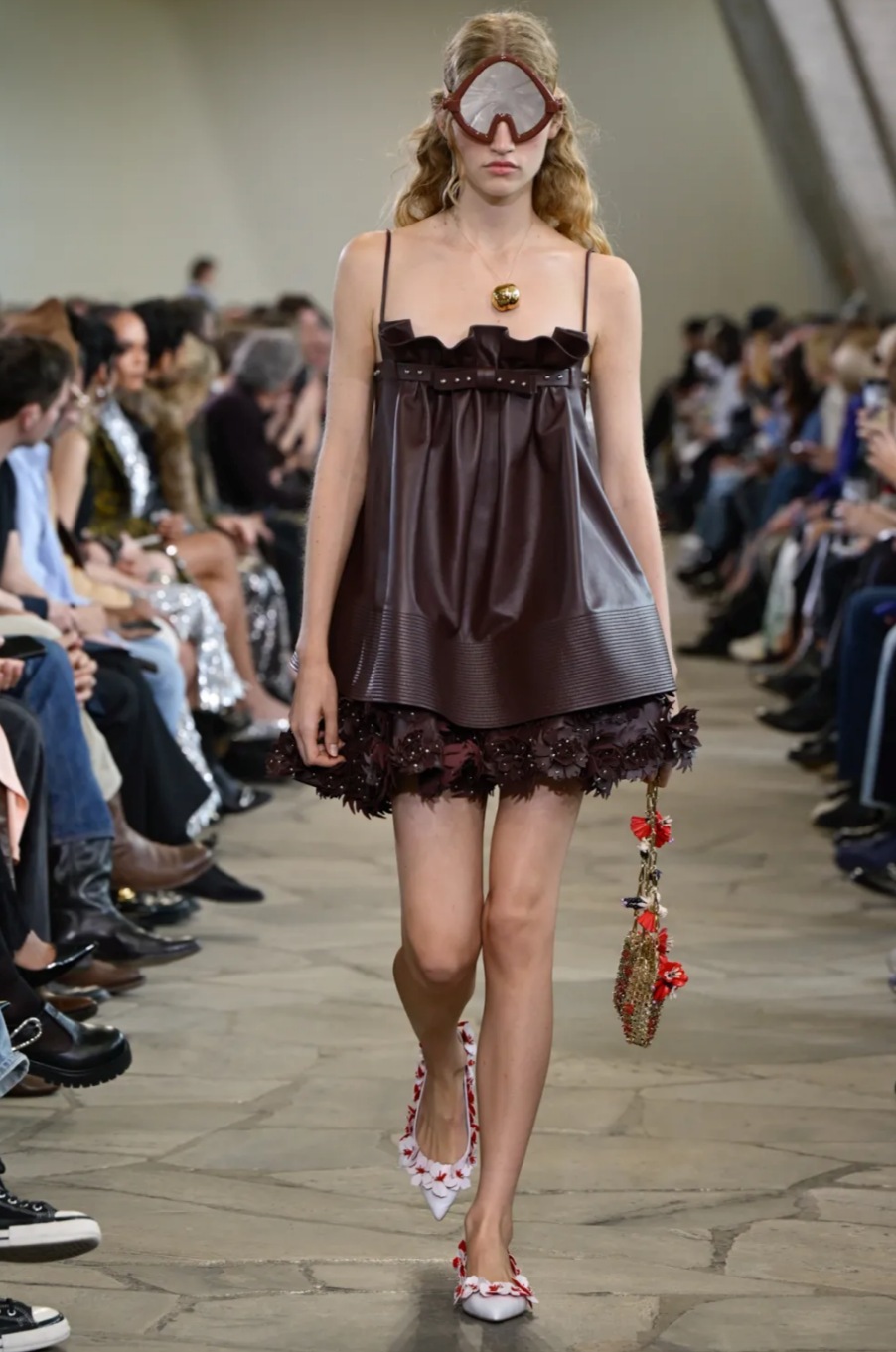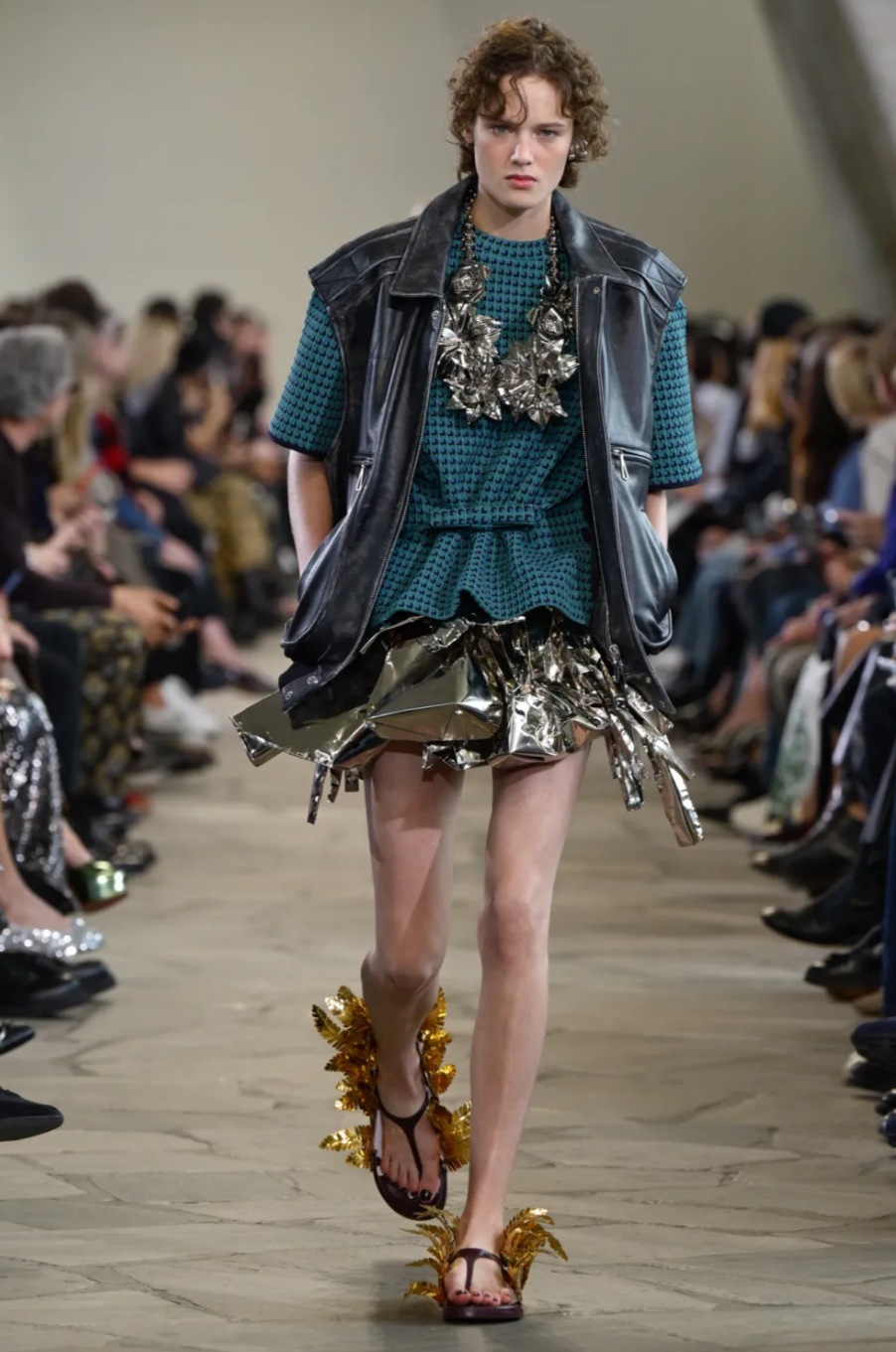
The show opened with singular silhouettes, veiled behind titanic glasses vast portholes that evoked less elegance than the wreckage of a maritime market. Was it a castaway of fashion approaching us, crowned with a diver’s mask, or the House of Rabanne itself, drifting through the troubled waters where beauty’s dreams go astray?
Once, it dared bronze armors, draperies forged like meteors fallen from the sky. Today, it offers us nothing more than trinket necklaces, those glass tears that gleam without radiance, destined to be forgotten as soon as they have flickered.
The aesthetic wavered, undecided, between the scraps of a hardware store and the remnants of a naval arsenal, lacking the prophetic vision that once opened horizons of steel and stars. Some spectators, indulgent, claimed to see there the allegory of fashion itself submerged, struggling against the undertow of time. Others, harsher, perceived nothing but a grotesque parade a ready-to-wear weighed down by heaviness and vain irony.
Far from the metal dresses which, in the heroic years, seemed to clothe women with an as-yet unexplored future, this 2026 collection resembles a Saturnalia of bad taste, where imagination drowns in the stagnant waters of vulgar chrome. Critics, divided between laughter and sighs, nonetheless bowed to one merit: Paco Rabanne knew how to capture attention. But to please? For that, like the stifled diver, one must resurface and breathe pure air once again where art regains its grandeur and fashion its immortal reason for being.

